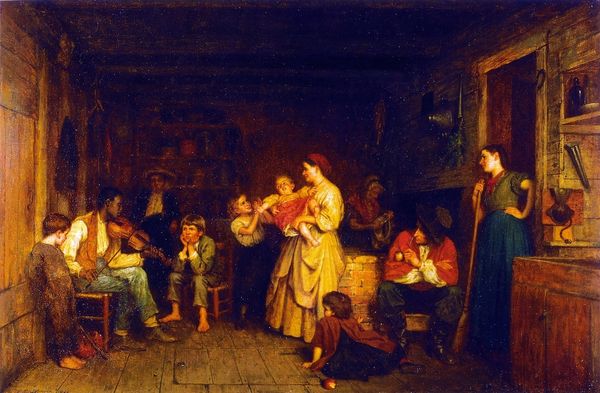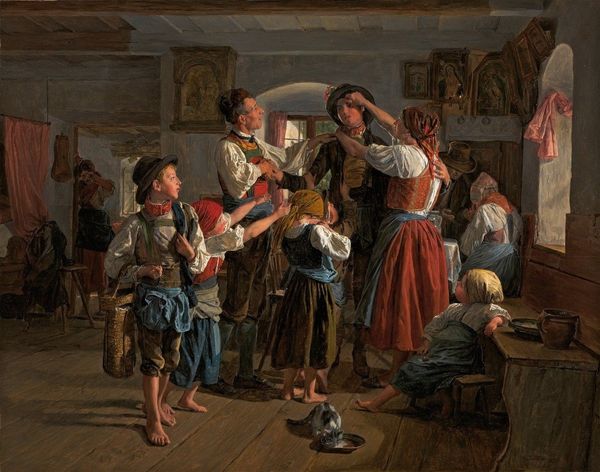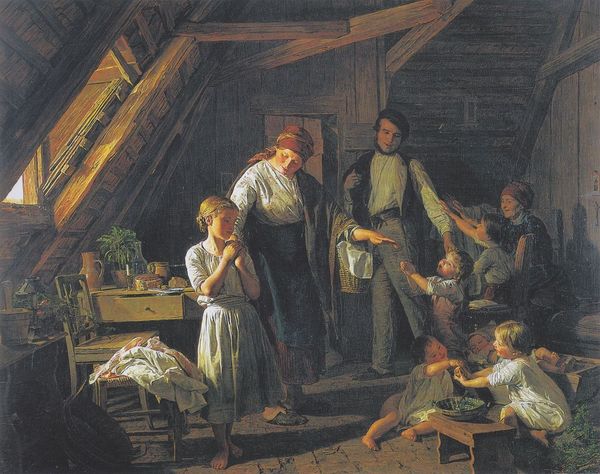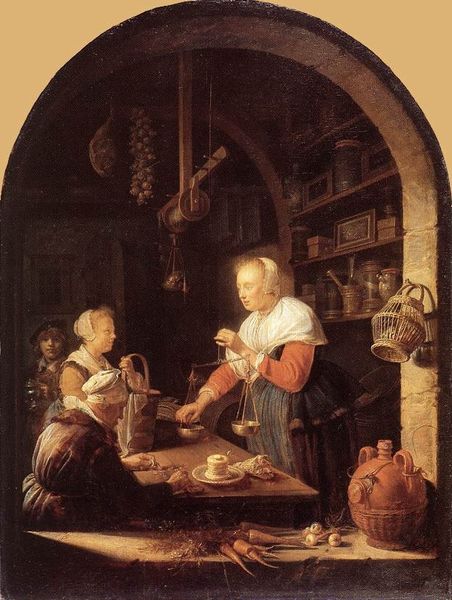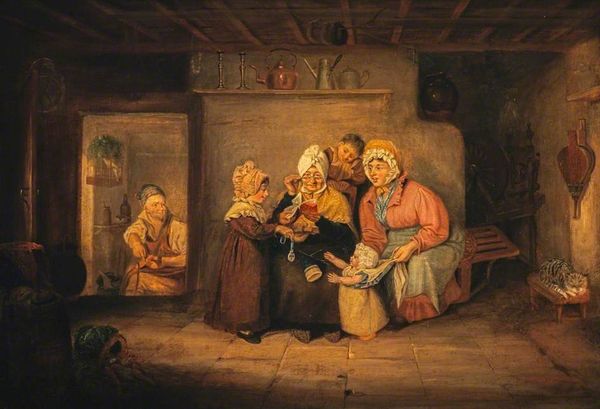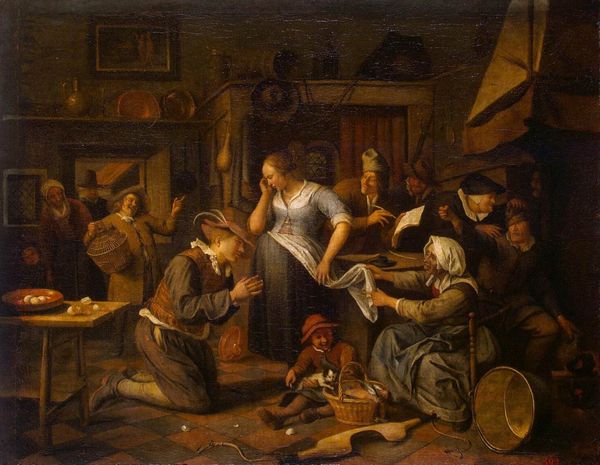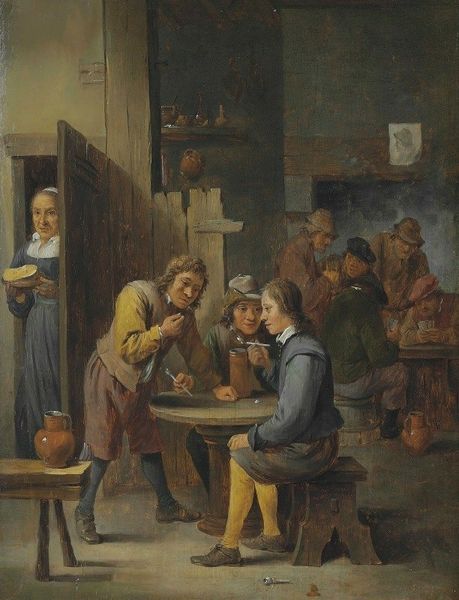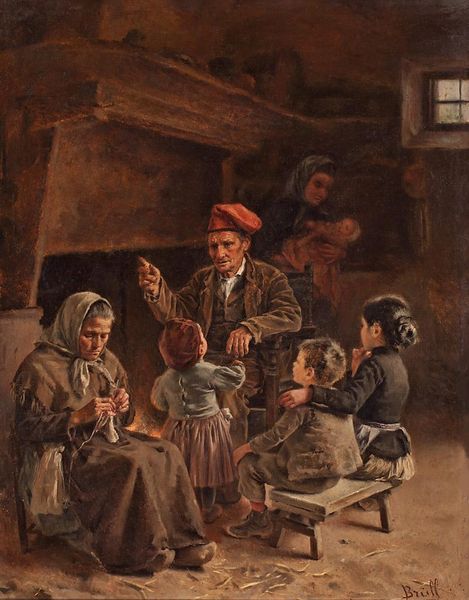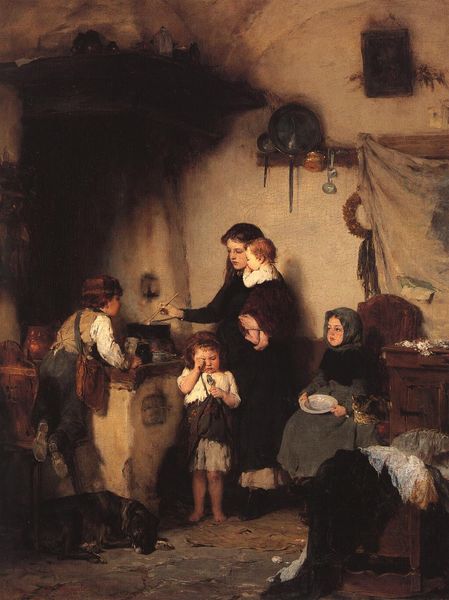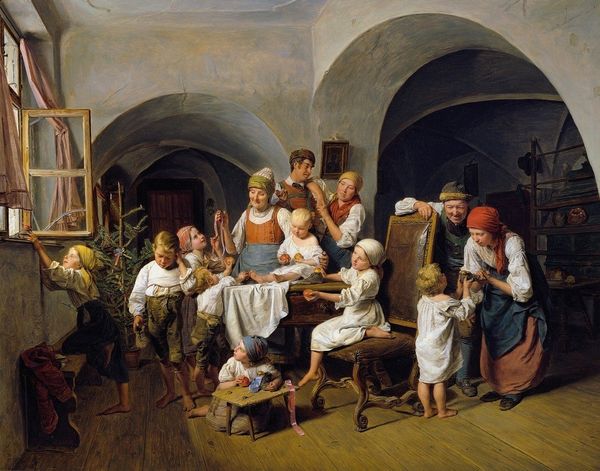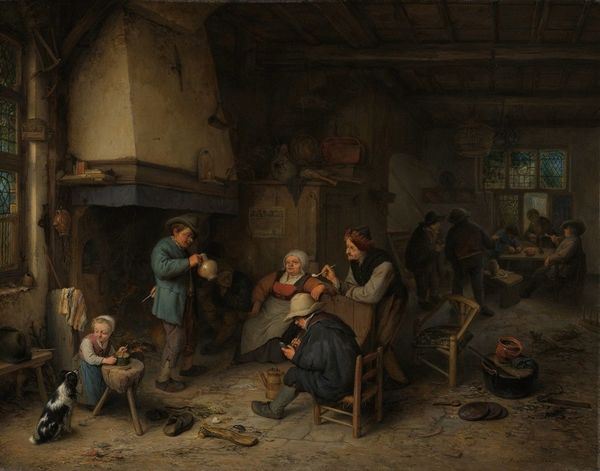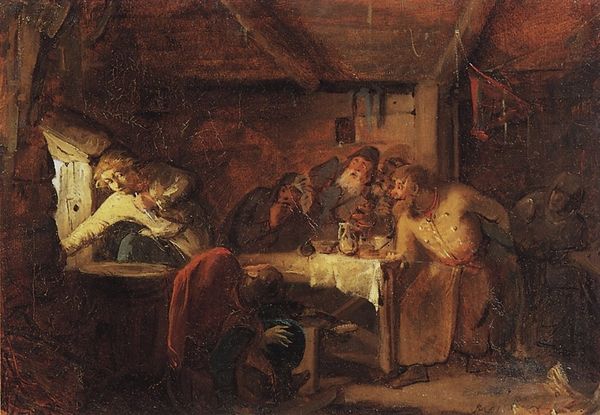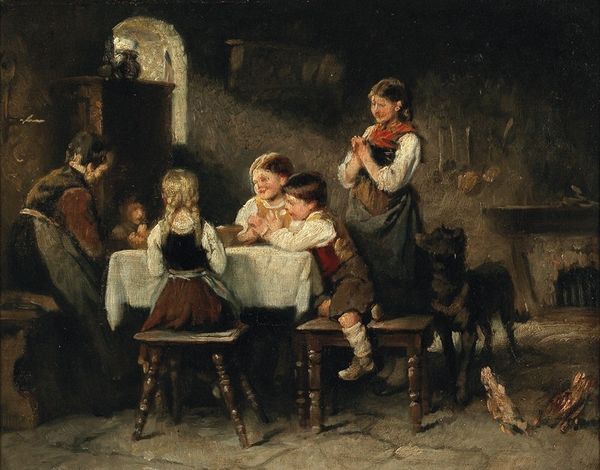
A traveling family of beggars is rewarded by poor peasants on Christmas Eve 1834
0:00
0:00
painting, oil-paint
#
narrative-art
#
painting
#
oil-paint
#
figuration
#
oil painting
#
group-portraits
#
romanticism
#
genre-painting
#
history-painting
#
realism
Copyright: Public domain
Editor: This is "A traveling family of beggars is rewarded by poor peasants on Christmas Eve" painted by Ferdinand Georg Waldmüller in 1834, using oil paint. The painting seems to capture a moment of surprising generosity. What is your interpretation of the dynamics at play here? Curator: The painting beautifully depicts an act of charity, but let's consider it through a lens of social power. Notice how Waldmüller positions the "poor peasants" as the benefactors, almost reversing traditional hierarchies. Who benefits from this narrative of benevolent charity? Editor: That's interesting. It's like the painting reinforces a certain idea about poverty and the role of the wealthy? Curator: Precisely. Think about the Biedermeier period, the rise of the bourgeoisie, and anxieties about social unrest. Is this a sincere depiction of compassion, or is it subtly reinforcing the status quo? Editor: So, while it looks like a heartwarming scene, it could be subtly upholding existing power structures? Curator: Indeed. And who is represented in this depiction? The begging family is literally othered. Are they afforded dignity, or are they instruments through which the peasant class enacts—and performs—Christian charity? What message is being sent to its intended viewers, namely members of the middle and upper classes? Editor: That makes you think differently about what Waldmüller was really trying to say. Thanks for sharing such an alternative viewpoint. Curator: It's vital to look beyond the surface to truly grasp the multiple layers within. Understanding paintings like these means understanding what lies unsaid.
Comments
No comments
Be the first to comment and join the conversation on the ultimate creative platform.
